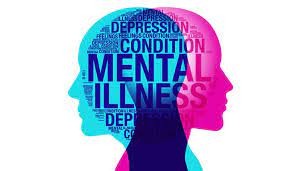
Active Fun: Engaging Fitness Games for Kids

Active Fun Unleashed: Engaging Fitness Games for Kids
Physical activity is essential for the healthy development of children. Transforming exercise into enjoyable and engaging experiences can foster a love for movement and contribute to overall well-being. Explore a variety of fitness games designed to make staying active a fun adventure for kids.
The Importance of Physical Activity for Kids
In a world increasingly dominated by screens and sedentary activities, ensuring that kids stay physically active is crucial. Physical activity not only supports the development of strong bones and muscles but also enhances cardiovascular health and promotes a healthy weight. Engaging fitness games provide an enjoyable avenue for kids to meet their daily activity requirements.
Incorporating Play into Exercise
For children, play is a natural and enjoyable way to learn and explore the world around them. Fitness games that incorporate play into exercise make staying active feel like playtime rather than a chore. These games often include elements of imagination, creativity, and interaction, keeping kids entertained while moving.
Outdoor Adventures and Scavenger Hunts
Take fitness outdoors with adventurous games and scavenger hunts. Whether it’s a nature-themed scavenger hunt, a backyard obstacle course, or a treasure hunt that combines physical challenges, these activities encourage kids to explore their surroundings while getting their hearts pumping.
Dance Parties and Musical Workouts
Turn up the music and let the dance party begin! Dancing is a fantastic way to improve cardiovascular fitness and coordination. Create themed dance parties or musical workouts that involve movement to the beat. This not only provides a great workout but also enhances rhythm and creativity.
Obstacle Courses for Physical Challenges
Obstacle courses offer a mix of physical challenges and fun. Set up a course using everyday household items or utilize playground equipment. Include activities like crawling under tables, jumping over cushions, and balancing on a line. Obstacle courses enhance agility, coordination, and motor skills.
Balloon Volleyball and Active Indoor Games
For days when outdoor activities aren’t feasible, balloon volleyball and other active indoor games come to the rescue. These games are designed to get kids moving within the confines of indoor spaces. Balloon volleyball, indoor relay races, and hopping games are just a few examples of active indoor options.
Fitness Bingo and Movement Challenges
Transform exercise into a game with fitness bingo and movement challenges. Create bingo cards with various exercises or movements, and as kids complete them, they mark off the corresponding squares. Movement challenges can include tasks like jumping jacks, squats, or even yoga poses, adding an element of variety and excitement.
Incorporating Technology with Active Video Games
Technology can also play a role in making fitness fun. Active video games that require physical movement, such as dance games or sports simulations, provide an interactive and entertaining way for kids to stay active. Just ensure that screen time is balanced with other forms of physical play.
Sports and Team Games for Social Interaction
Incorporating sports and team games not only enhances physical fitness but also encourages social interaction and teamwork. Activities like soccer, basketball, or relay races promote cooperation and communication among children while keeping them physically active.
Creating a Culture of Active Living
The key to instilling a love for physical activity in children is to create a culture of active living. By making fitness enjoyable through engaging games, kids are more likely to view exercise as a positive and integral part of their lives. These activities contribute to the development of lifelong healthy habits.
For a plethora of fitness game ideas and resources to keep your kids active and healthy, visit petuniapicklebottom.org. Make exercise a joyous adventure for your children, laying the foundation for a lifetime of active living.












